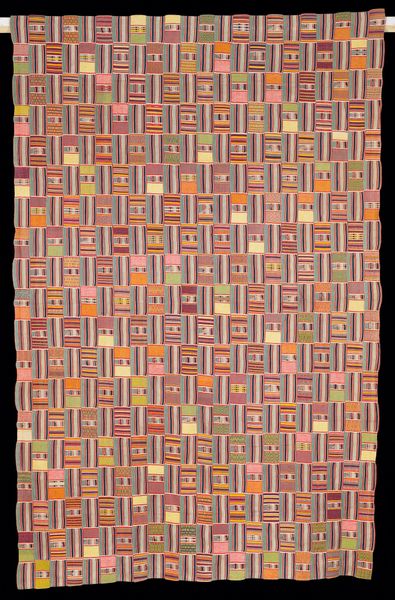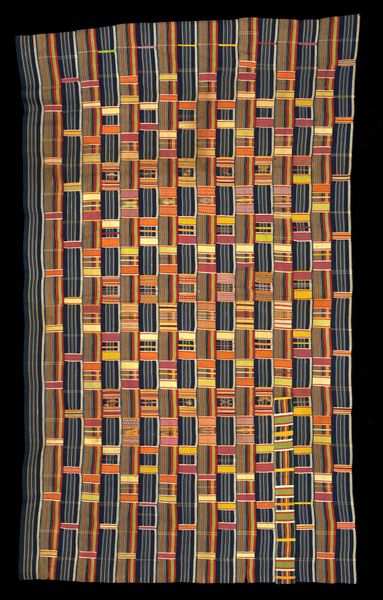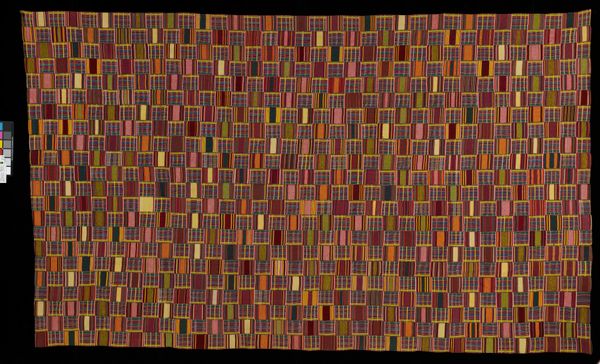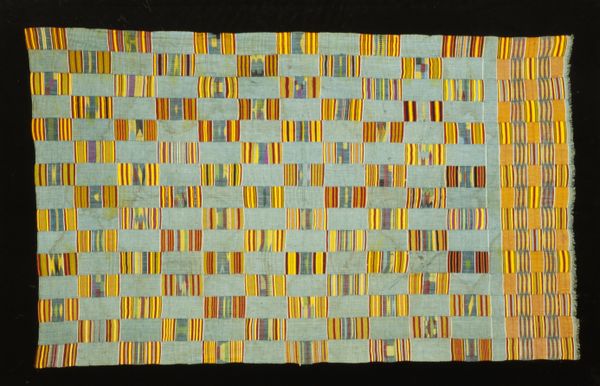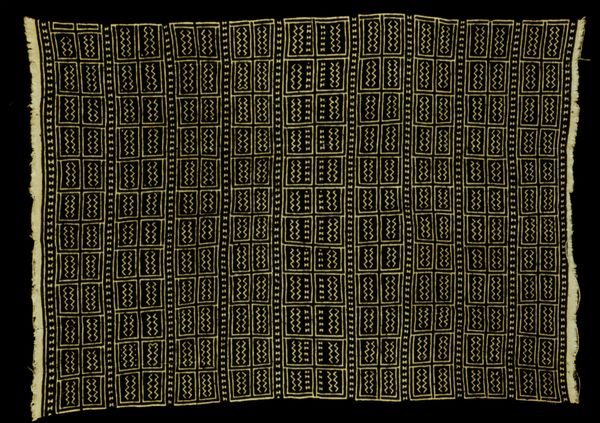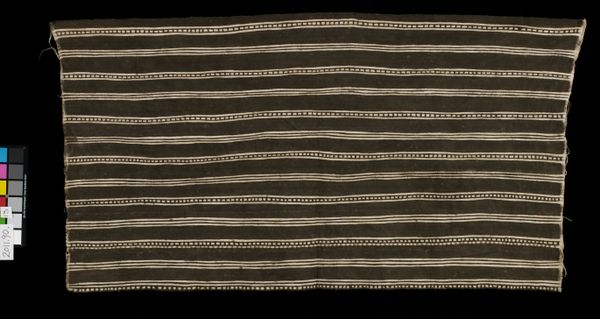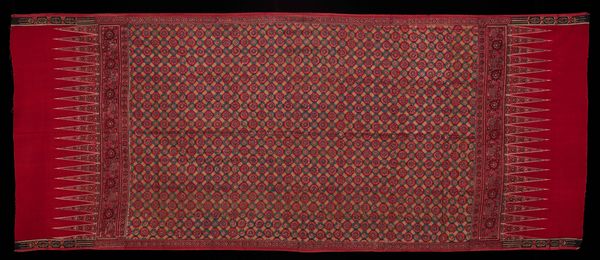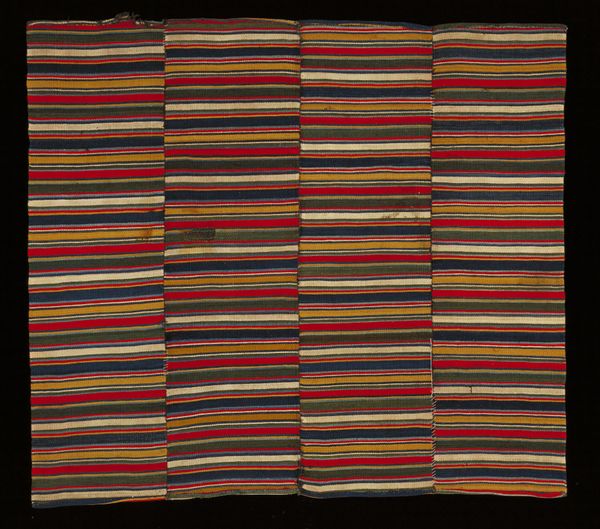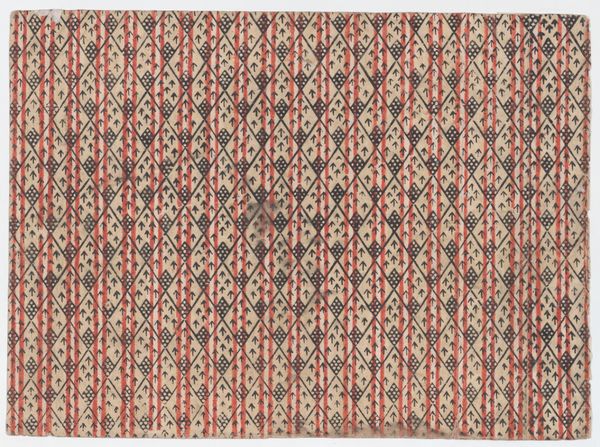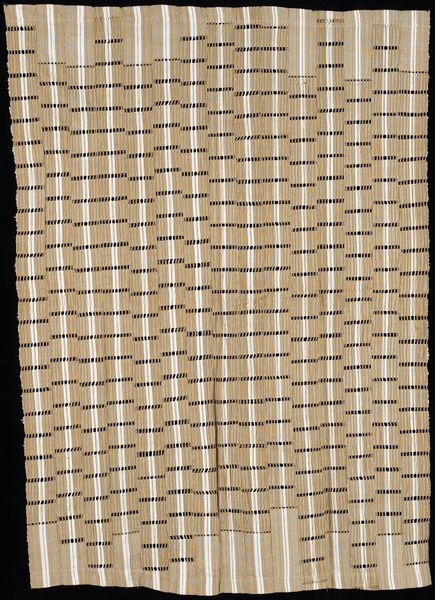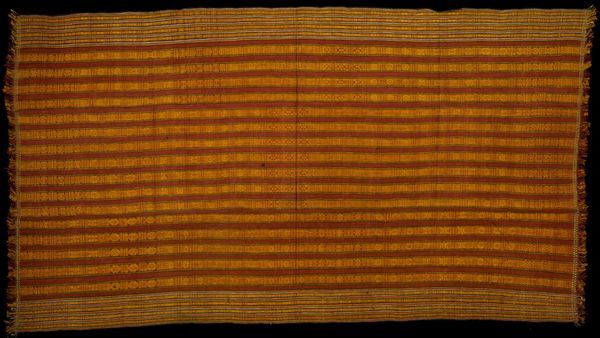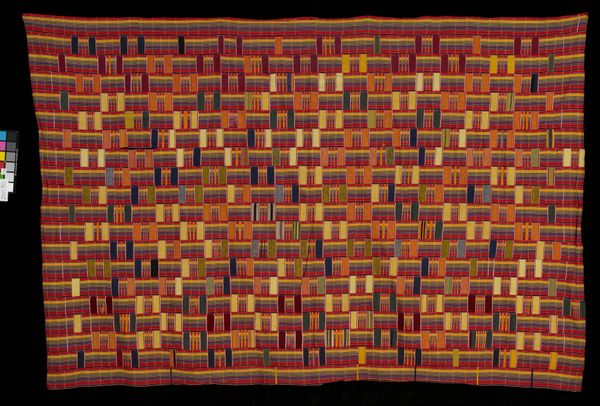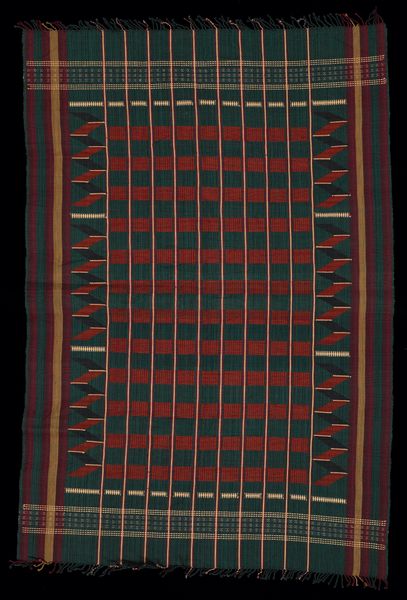
fibre-art, weaving, textile, cotton
#
african-art
#
fibre-art
#
pattern
#
weaving
#
textile
#
geometric pattern
#
abstract pattern
#
minimal pattern
#
organic pattern
#
geometric
#
repetition of pattern
#
vertical pattern
#
pattern repetition
#
cotton
#
layered pattern
#
combined pattern
Dimensions: 79 5/16 x 107 3/4 in. (201.45 x 273.69 cm)
Copyright: Public Domain
This woven textile, a man’s cloth, was made by an Ewe artist and is composed of cotton and rayon. The cloth features a grid-like design with blocks of horizontal bands separated by vertical blue lines. The complex process of creating such a textile involves the labor of spinning, dyeing, and weaving. The weavers create strips of fabric, sometimes using a double-heddle loom, and then sew them together edge to edge to form the larger cloth. The colors themselves were originally derived from natural sources, but now often incorporate synthetic dyes, a shift that reflects changing global trade patterns and economies. This textile represents the skilled traditions of the Ewe people, who are known for their expertise in weaving elaborate and meaningful textiles. The amount of work involved in the production process reflects the value placed on these cloths, not only as objects of beauty but also as symbols of cultural identity and social status. Paying attention to the materials, making, and context of this cloth helps us to understand its full meaning, questioning the separation of art and craft.
Comments
minneapolisinstituteofart almost 2 years ago
⋮
Ewe weavers produce exquisite garments of fine quality cloth that are often worn at ceremonial gatherings such as puberty rites, marriages, ordinations, funerals and festivals. A distinguishing feature of Ewe cloth is the use of representational imagery interspersed between blocks of colorful stripes. Unconstrained by traditional patterns or color schemes, these weavers freely invent designs that are limited only by their imagination and technical skills. The simple blue and white plaid background of this wrapper relates it to very early Ewe weavings which used undyed cotton and indigo-dyed warp threads. The figurative weft patterns used on this cloth are primarily geometric motifs, but some may symbolize shields, drums or stools.
Join the conversation
Join millions of artists and users on Artera today and experience the ultimate creative platform.
